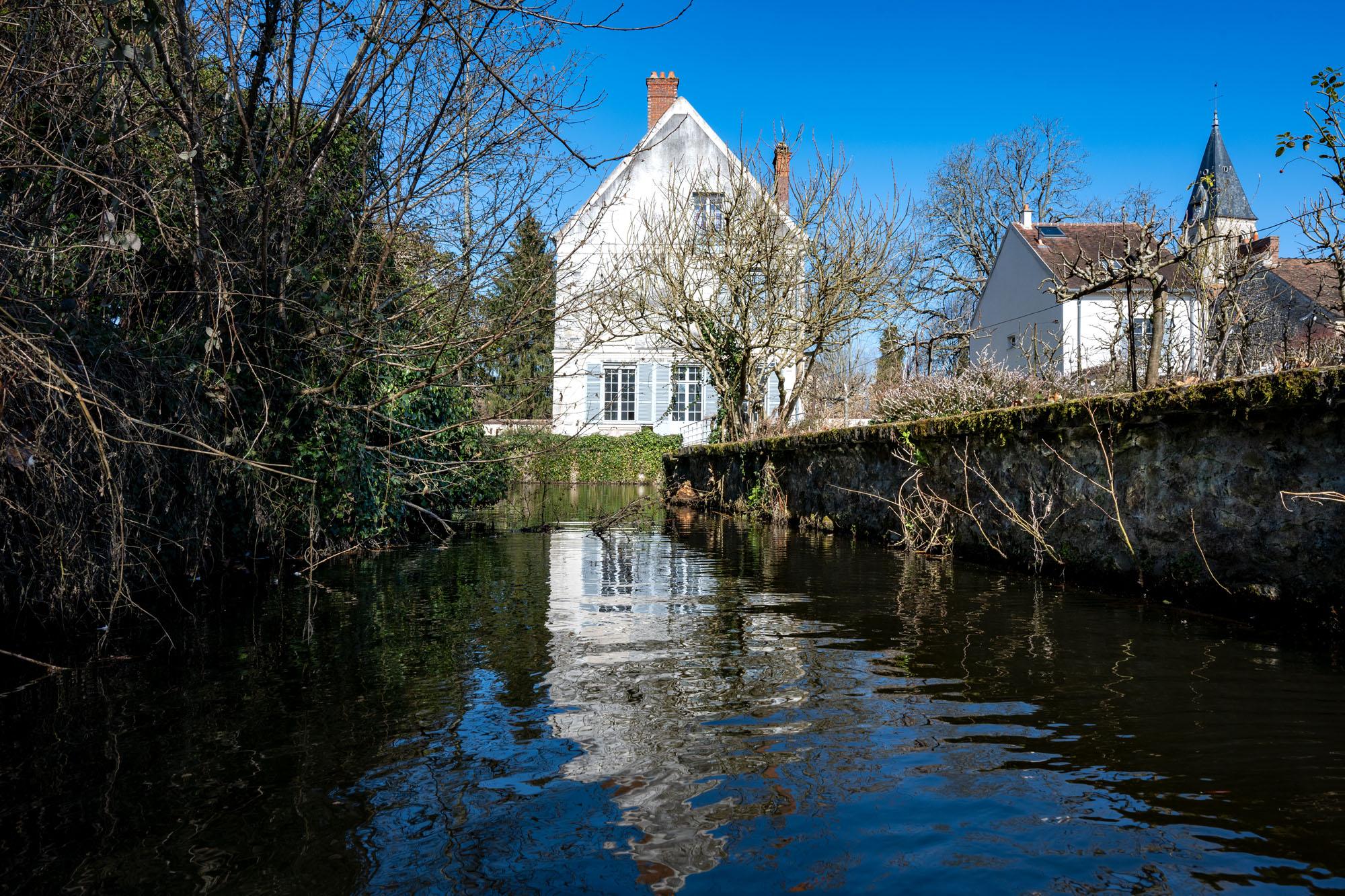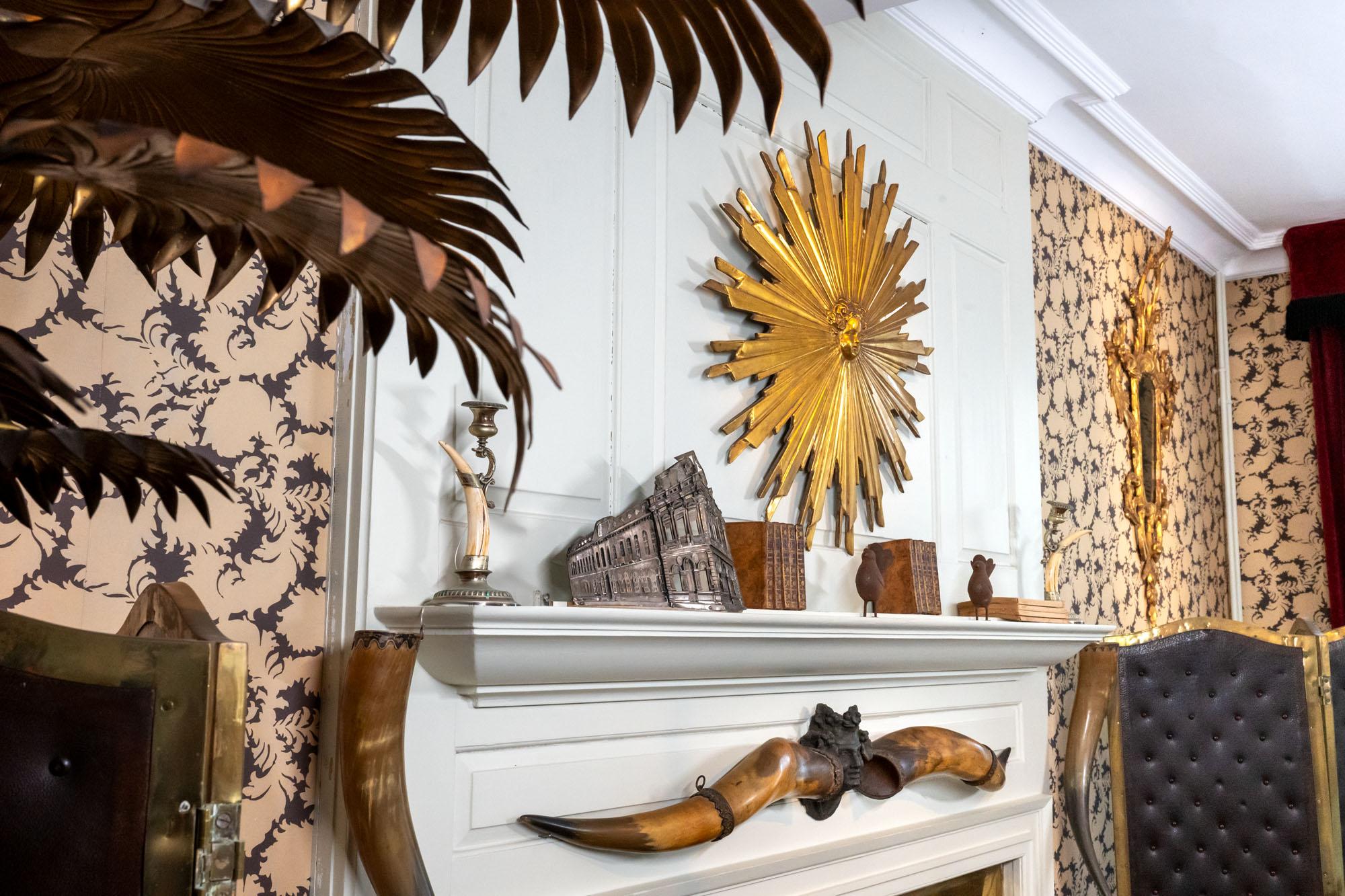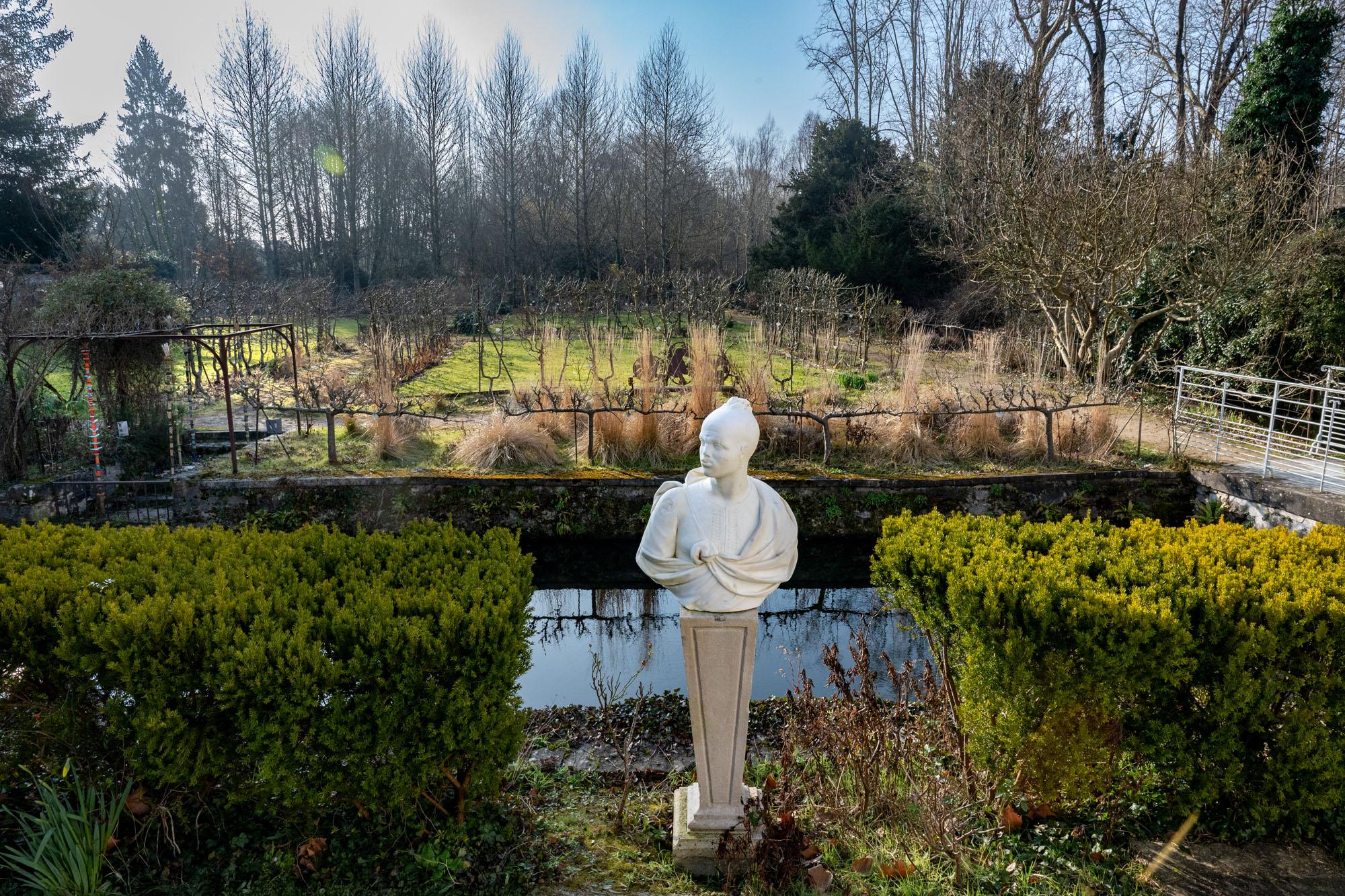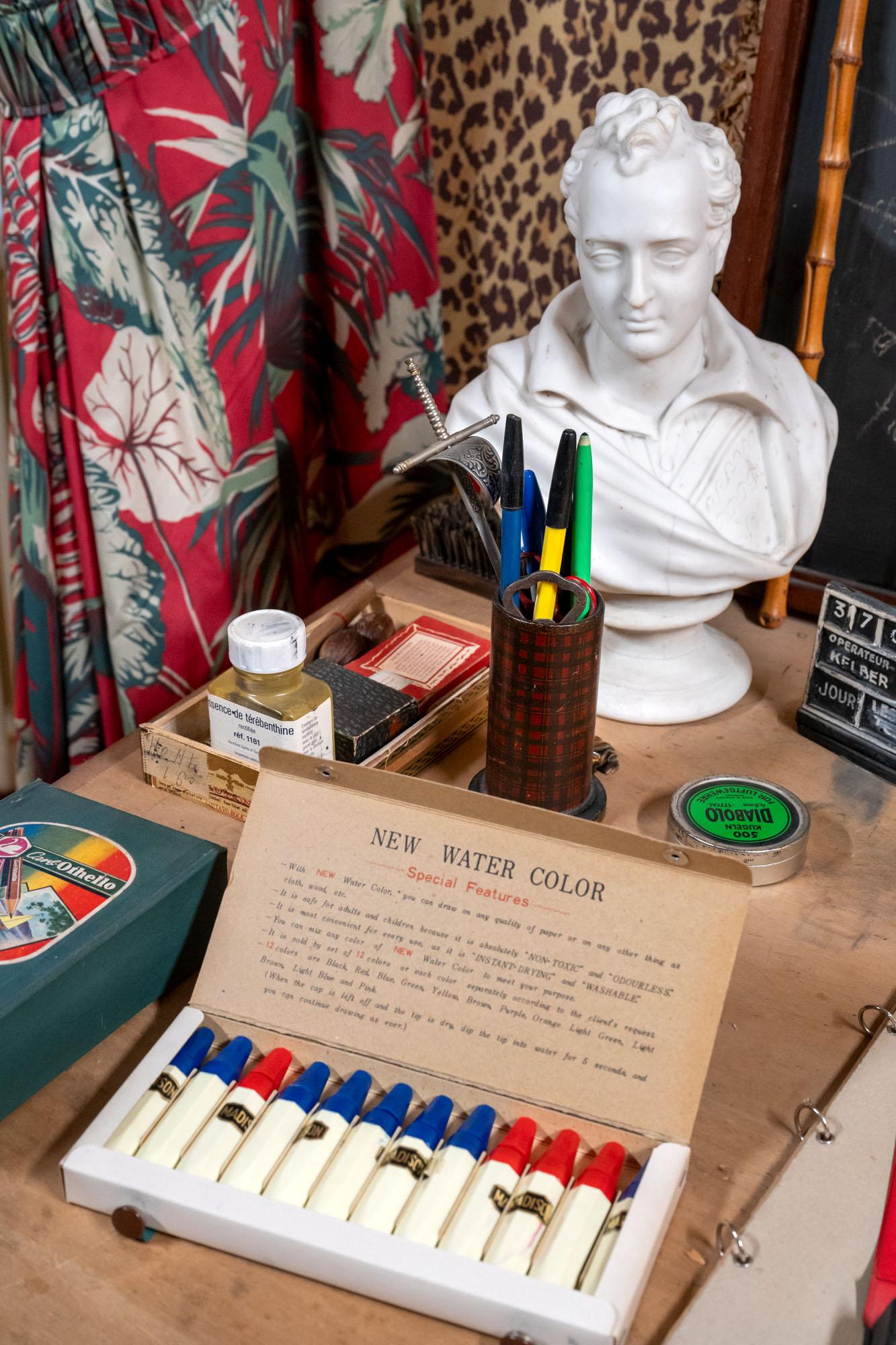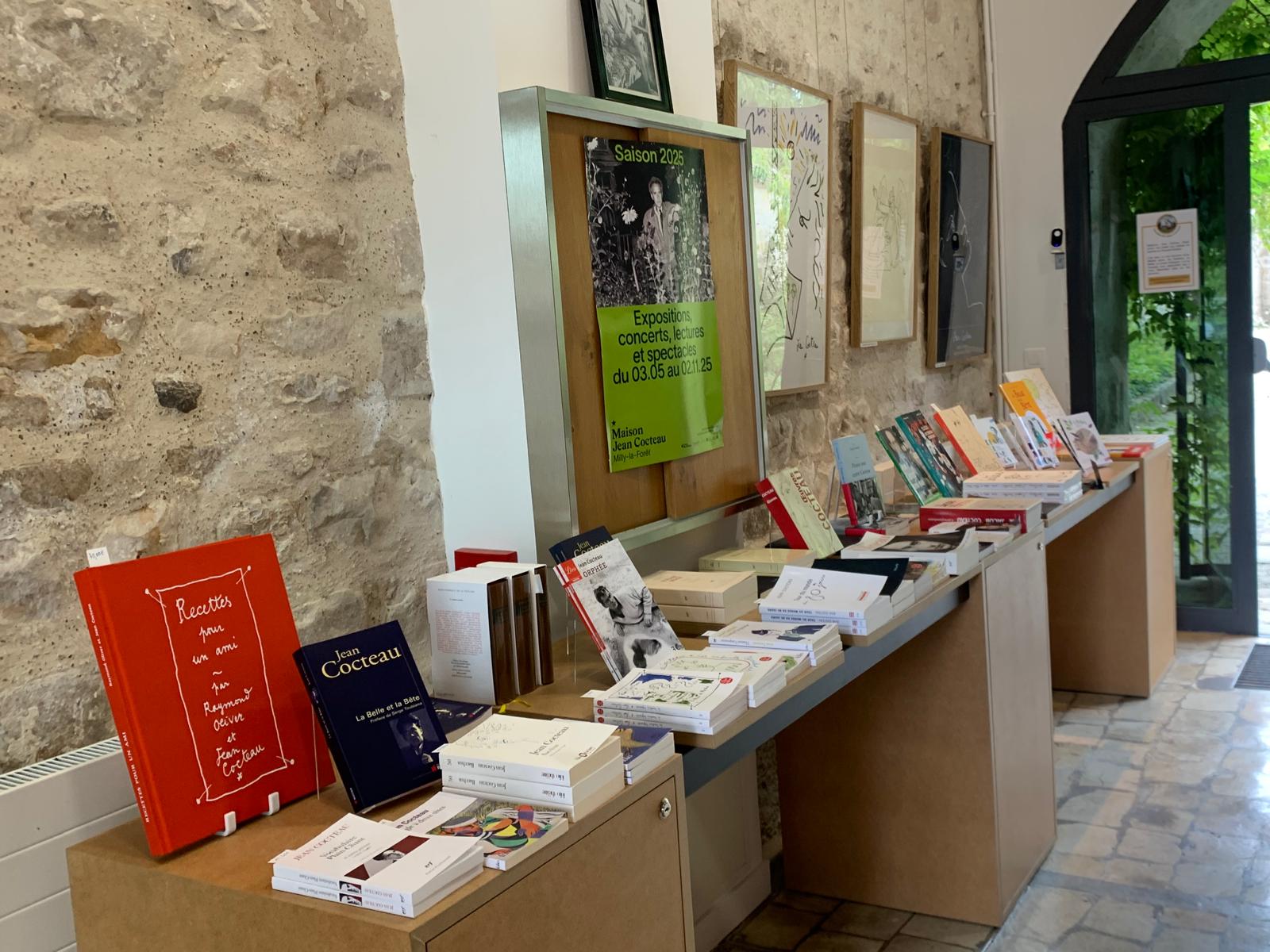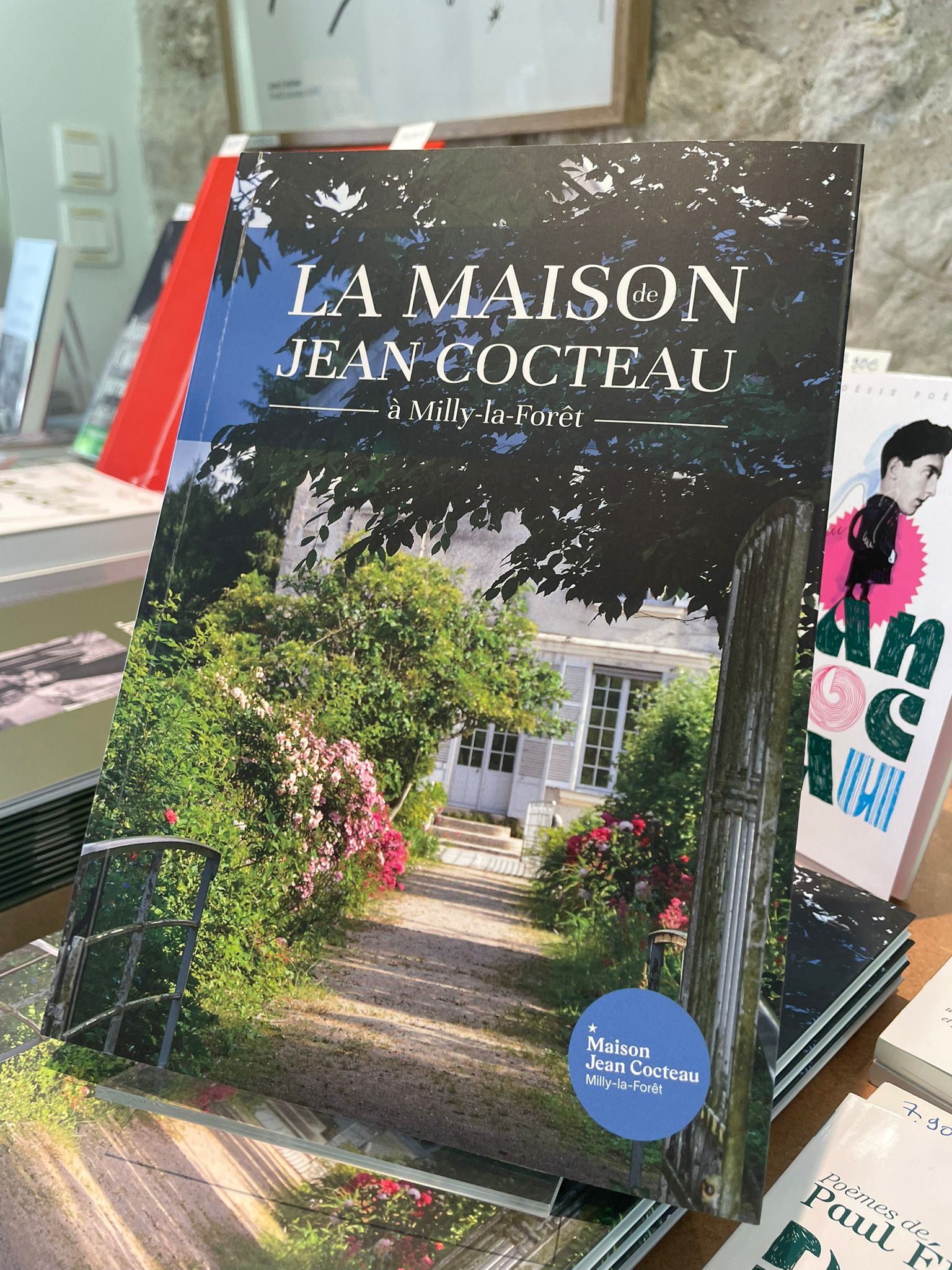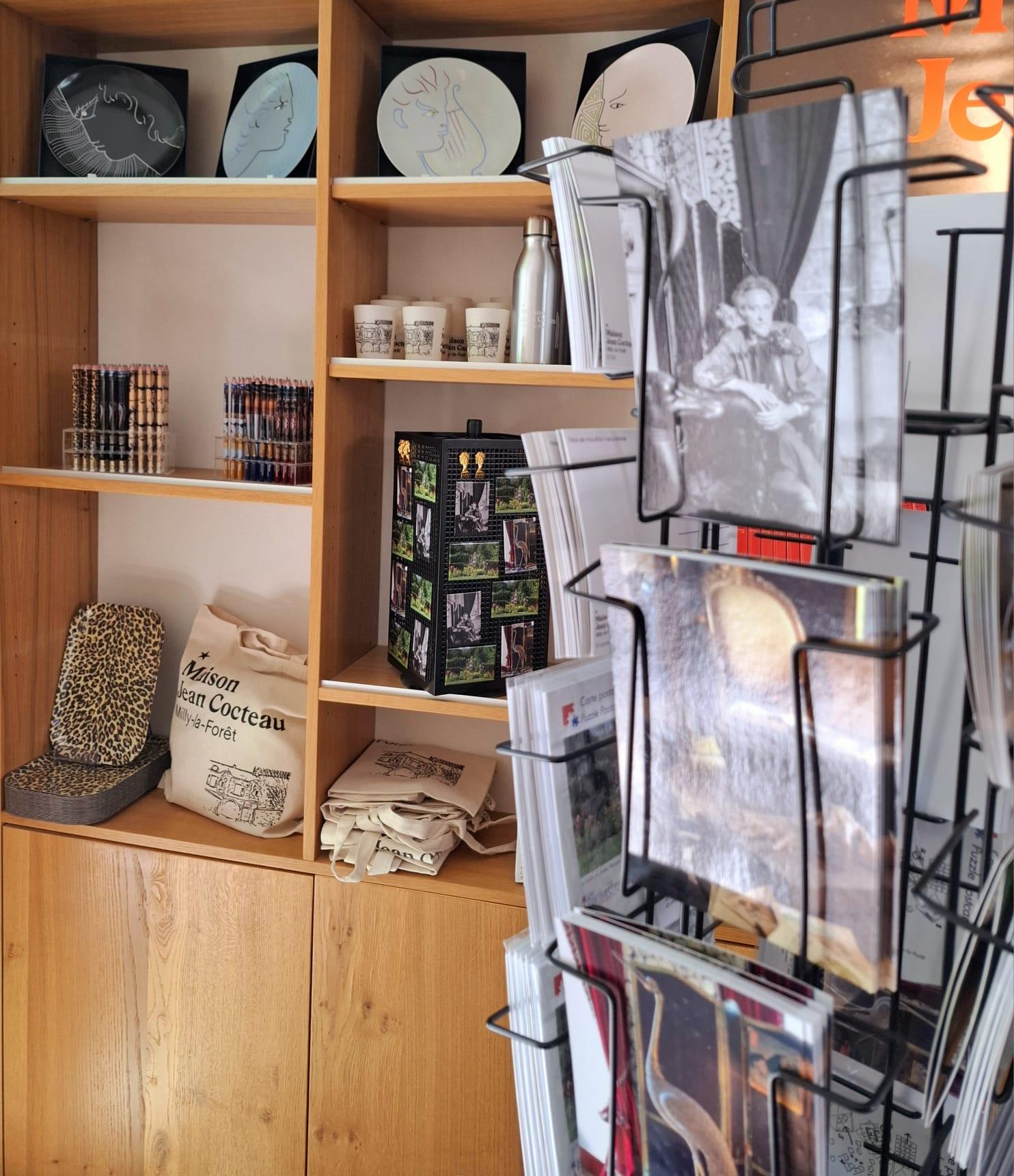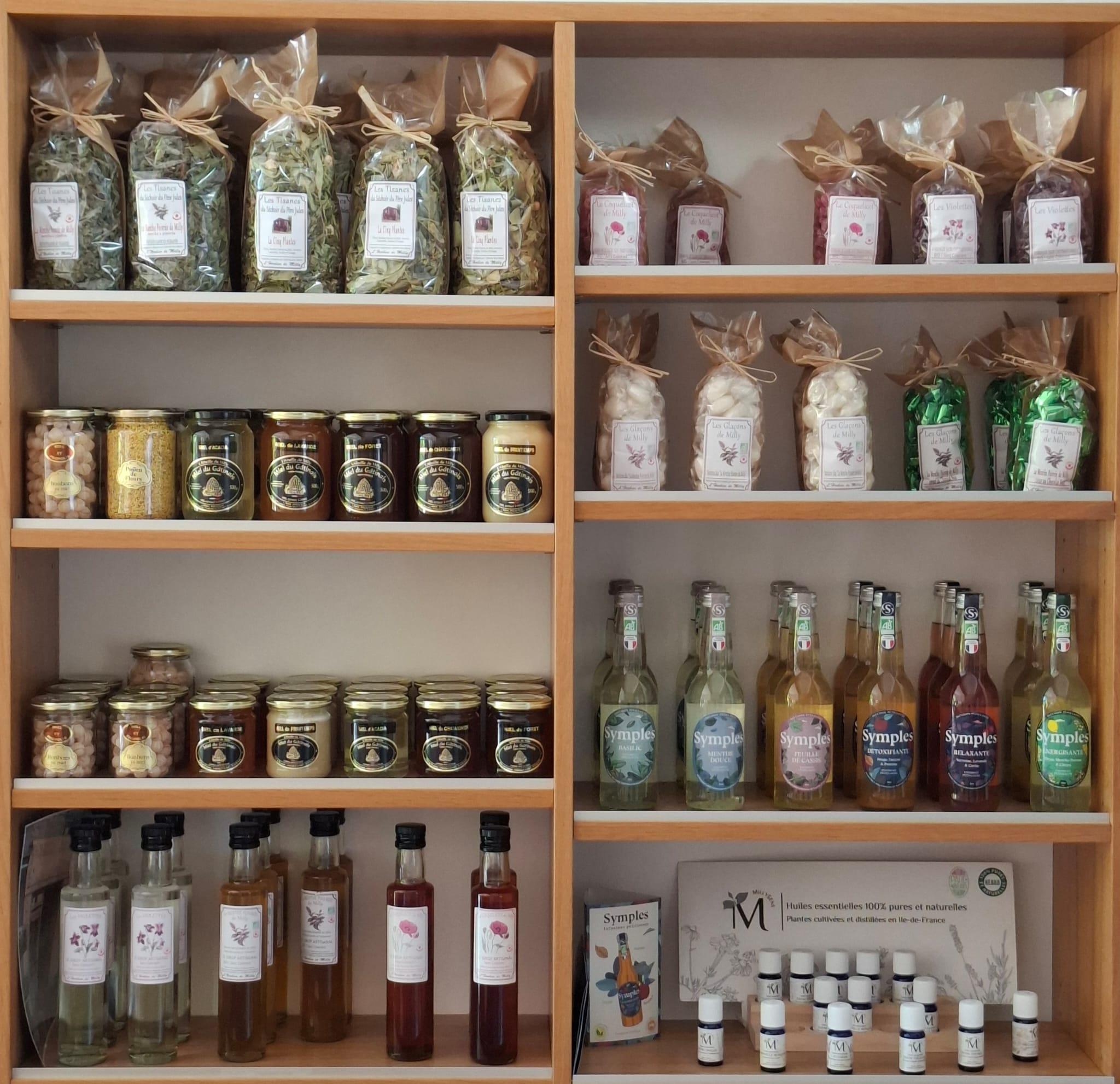The Maison Jean Cocteau,
a haven in the countryside
« In Milly, I found the rarest thing in the world: a setting »
In 1946, as the filming of Beauty and the Beast drew to a close, Jean Cocteau longed to leave Paris and find a haven in the countryside. Jean Cocteau and Jean Marais visited this place and fell in love with the scenery. They acquired the house in 1947.
The Maison du Bailly, Jean Cocteau’s ‘refuge’ from 1947 until his death in 1963, occupies a singular position in the urban area of Milly-la-Forêt. Formerly part of the Château de la Bonde (a 13th-century castle), this block of outbuildings stands like a sentry, its two brick turrets rising above the Rue du Lau cul-de-sac, a boundary line at the edges of the town.
1947-1963 : Jean COCTEAU
« [It was] the house which was waiting for me… It gives me an example of the absurd magnificent stubbornness of the vegetable kingdom… The waters of the moat and the sunshine reflect on the walls of my room their false shimmering marbles. »
Cocteau acquired a section of the domain, comprising the manor (the Maison du Bailly), its garden, a wood and a pavilion in the local style, even though the fame engendered by his poetry and the success of La Belle et la Bête (Beauty and the Beast) meant he was much in demand elsewhere. In this site’s relative vagueness, emphasised by the ruined tower overrun with leaves at the corner of the moat and by the fanciful decorative backdrop provided by the chateau, he probably found a setting that echoed his heady taste for the otherworldly. It is as though he felt the welcoming tranquility of a domestic space.
In 1947, Jean Cocteau moved into the Maison de Milly-la-Forêt, while keeping his Parisian flat in the Palais Royal. With the help of his friend Madeleine Castaing, a decorator, he fitted out his living rooms. The décor of the ground-floor living room reveals an eclectic, poetic universe that is both intimate and open to the outside world. Upstairs, the office, entirely wallpapered in leopard print, and the bedroom both offer glimpses of the thick walls and towers of the neighbouring castle.
1963-2002 : Édouard DERMIT and his children
Édouard Dermit (1925-1995) met Jean Cocteau in Paris, July 1947. He was hired as the gardener at the house in Milly-la-Forêt. By Cocteau’s side, he became an actor and painter, and held a very special place in the poet’s life. Considered to be his ‘adopted son’, he inherited the house on Jean Cocteau’s death, and carefully preserved the sitting room, office and bedroom with their furniture and objects, thus preserving the poet’s world.
He died in 1995. He bequeathed the house to his two sons, with the obligation to keep Jean Cocteau’s legacy intact.
2002-2019 : Pierre BERGÉ and the Maison Jean COCTEAU Association
The house was acquired in 2002 by the Maison Jean Cocteau association, of which Pierre Bergé was president. Both a patron and admirer of Jean Cocteau, he took the initiative to pay for the extensive restoration work carried out on the house between 2005 and 2010, with the idea in mind to create a museum. The House was awarded the ‘Maison des Illustres‘ label, bringing the unique world created by Jean Cocteau into the public domain.
From 2019 : The Ile-de-France Region
After Pierre Bergé passed away in 2017, the Ile-de-France Region, and thanks to its president Valérie Pécresse, agreed to take over responsibility for the museum, thus continuing the vocation of its predecessors. She initiated the creation of the ‘Groupement d’intérêt public‘ (GIP) Maison Jean Cocteau in 2019 with the Département de l’Essonne, the town of Milly-la-Forêt, the Comité régional du Tourisme and the Centre Pompidou, in order to open the Maison Jean Cocteau to the visitors.
Objects of curiosity
A lover of unusual objects and an avid collector, Jean Cocteau surrounded himself with the things he loved. The furniture and objects in the rooms reflect the poet’s taste for beauty. For example, a narwhal tooth sits next to a Gothic-style wardrobe, and André Gide’s armchair faces the mirror given to him by Coco Chanel. Donated by his friend, the painter and decorator Christian Bérard, a very large drawing of ‘Oedipus and the Sphinx‘ adds to the overall atmosphere of a curiosity cabinet. Some of the drawings that were kept in the House were the subject of a dation in 2019 and entered the national collections. They are now housed at the ‘Musée national d’art moderne (Centre Pompidou)‘.
The poet’s garden
The garden changes with the seasons. Punctuated by the moat of the Château de la Bonde, it offers a walk through a wealth of flora. You can admire freesias, peonies and irises in spring, roses in summer, anemones in autumn and hellebores in winter. The diversity of varieties will delight the most curious. The garden is divided into several areas: in front of the Maison, a pear tree stands majestically in the middle of a square surrounded by flowers; behind it, the sculptures dear to Jean Cocteau take pride of place in the former kitchen garden. Beyond the little bridge is the orchard with its four squares lined with apple trees: Reine des Reinettes, Arkanes and Melroses. At a bend in one of them, you can discover the medicinal plants (henbane, belladonna, Milly peppermint, etc.) that served as models for the poet’s paintings in the chapel.
The temporary exhibition room
Part of the first floor has been converted into an exhibition room, so that visitors can discover a temporary exhibition each year. This modular space, whose walls have been painted by the artist Jackie Hyde, is open on both sides and has been designed for each exhibition. A projection room allows visitors to end their visit with a film or documentary that showcases Cocteau as a filmmaker, a surrealist before his time and a favorite of the Nouvelle Vague..
The second floor
Currently closed to visitors, the second-floor houses Jean Marais’s bedroom, where he used to visit his former companion, and Jean Cocteau’s studio, located in the attic and lit by two large skylights. It was here that Cocteau painted large-format canvases and worked on cartoons for stained glass windows..
